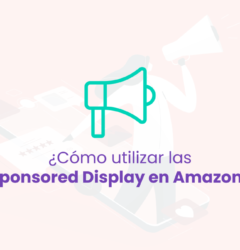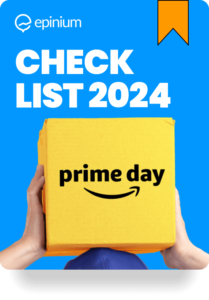Amazon Advertising is really stealing a big piece of the cake of Google’s advertising due to one major reason; billions of shoppers who see the platform as a shopping search engine and as a way of finding out products.
This blend of customer intent, together with the large amount of data that Amazon has stored on its customers, confirms that Amazon Advertising is simply steps ahead of most online advertising portals.
It also means that advertisers can build targeted campaigns relatively easily. However, to make them truly successful, these campaigns must also use Amazon’s set of tools and ad formats to it.
On such a huge platform as Amazon, it is always going to be a little more difficult to stand out from the crowd. Greater interest leads to greater competition, and only advertisers and brands who take this seriously can have a chance to benefit. Thankfully, there are ways to boost campaign effectiveness by being strategic and switched on to Amazon ad formats and campaign options.
No matter what the goals of a campaign are, if you know exactly how to use Amazon to the optimum advantage, puts brands in the best position for greater successes both now and in the future.
We gathered some of the best tips for more advanced Amazon advertisers:
1. Never forget negative keywords
Negative keywords are often wrongly understood by online advertisers, yet they can be surprisingly effective when used in the right way. Using a similar way to the one found in Google Ads, Amazon’s own negative keywords option allows advertisers to specifically those words and phrases which simply don’t have positive outcomes. Specifying them, means ads won’t show when those search terms are used, ensuring optimal use of budget and diminishing wasted spending.
Finding out which keywords could convert is a vital part of managing your online selling activity, so it is definitely worth investing some time into getting it right. When you are filtering your keywords, think carefully about the keywords which do not serve you, yet could still possibly display in searches for your product. Some of the key areas to think about include:
Keywords linked with other brands
For specific products, your own brand may often appear in searches for specific other brands due to the product type. However, this doesn’t necessarily mean that your product should be there. An example of this is of luxury brands when you are selling a lower priced item – for mid-level brands, appearing together with these brand names could prove potentially profitable and beneficial, but if you’re at the lower end of the market, it is best to avoid appearing in too many searches which won’t lead to a purchase.
Keywords which produce traffic without conversions
Some keywords generate a huge number of clicks but don’t end up converting. While this might seem a positive thing when it comes to driving traffic to your brand, it doesn’t actually help your profit margins. So, relying too heavily on keywords that don’t generate income for the brand through conversions can make you waste money and time.
How to find my negative keywords
To gather your negative keywords quickly, use your Search Term Report and look for the search terms which haven’t converted any sales. Once you’ve added them to your list of negative keywords, you’ll soon see the decrease in your ad spend. You can’t really know what your customers are searching for without paying close attention to your keywords. Selecting your negative keywords will stop you from wasting your ad spend on adverts that don’t produce positive outcomes..
2. Make your Advertising Cost of Sale more flexible
Since you will want to keep your ACoS as low as possible, it is also important to know your aims at the outset. Each campaign will have an individual aim, which will provide greater clarity, whether you’re in the midst of a new product launch, want to keep the same momentum going as before, or are pursuing any number of different goals.
We gathered a few ways to make sure you achieve your goals, so let’s take a look:
Setting better ACoS goals
Lowering the cost of your advertising will likely be high on your list of priorities, particularly for products that are already amongst your best-sellers. There are many reasons why this is so important, but pivotally you should remember that as best-selling goods, shoppers are already finding them with relative ease. It is, therefore, reasonable to limit your costs as much as possible to help boost overall profits from these products.
Other rules may apply in the case of a new product launch, where setting a higher ACoS, (particularly during the early stages of selling) may help you establish a stronger presence than is required with pre-established items. This is a very simplistic yet tremendously effective way to improve the efficiency of your Amazon advertising.
3. Target based on the category in Sponsored Products
Amazon Sponsored Products has become the most popular part of Amazon Advertising, and this is perhaps in part due to the favorable locations the ads appear in during search results. They can be found either above, alongside or below Amazon’s search results, but they are also found on individual product pages.
This type of advertising will give you the chance to get more specific with your ads, selecting a category, and linking it to the company products. These can be almost as specific as you like, including complementary products that could supplement the item displayed in search. Using this tactic gives you a very useful tool in trying to boost sales, and allows advertisers to get their products listed beside products or brands in the same genre or price range.
There are ways to further segment categories, using Product Attribute Targeting. This will ensure that ads only appear beside top-rated products.
How do I target by category in Sponsored Products?
To target your ads by category, use manual targeting at the outset of your campaign. Next, choose the products you want to advertise and organize your bidding strategy. Choosing product categories is the next step, alongside your price range, target customer, and a number of other variables. For new product launches, Epinium recommends you take a particularly strict approach.
4. Make your products more profitable
This will likely sound obvious to both seasoned and newly sellers, but there is a lot to be said about focusing on this simple yet effective method of boosting your overall profitability. Amazon users will have a wide variety of data at their fingertips, and it can be helpful to focus on this at the most basic of levels before you begin planning more complex strategies.
Improving the profitability of your products isn’t just about pricing things at a higher rate – far from it. Instead, we suggest looking for opportunities to understand the overall gross profit of each sale before even beginning to make adjustments to advertising campaigns. There are many key benefits to adopting this approach, but chief amongst them is the fact that unless you know what products are likely to make you the most money, it can be tricky to devise adequate campaigns
How to make the most of product profitability
Our team of professionals, recommends to first analyze the products you have for sale, in order to establish which ones offer the most favorable profit margins. This is a vital step before you begin setting up paid advertising campaigns because you will otherwise be risking wasting your ad spend on products instead of saving ad spend by selecting products that would stand to benefit significantly more from your investment.
5. Amazon Sponsored Brands to help build awareness
Sponsored Brands is another of Amazon’s most attractive tools, and one of the most popular ones. These ads allow advertisers to get their brands seen above Amazon’s own search results, and ultimately have a very positive effect on promotion and brand awareness.
In particular, they are very helpful for promoting more than one product and give users the chance to dramatically impact their profits without spending huge amounts of money.
How to use Amazon Sponsored Brands effectively
We highly recommend advertisers use Sponsored Brands for advertising campaigns that focus on the top of the sales funnel. The tool will be particularly useful when it is used together with the right keywords and search terms.
Use keywords to develop stronger awareness of the brand, and also look for ways to add even more value.
If you liked this post about Amazon Advertising, make sure to stay tuned for more posts like this and leave a comments in the comments section below should you have any question!






